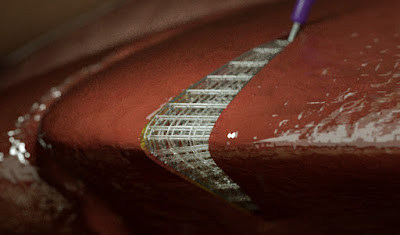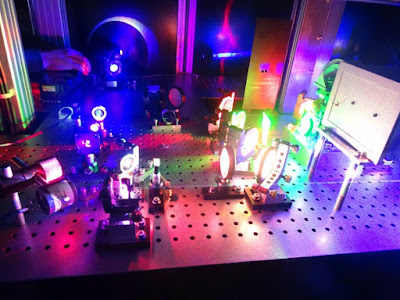 |
| A lattice scaffold 3D printed directly onto soft living tissue. (Courtesy: Ohio State University) |
Topics: 3D Printing, Bioengineering, Biofabrication, Biology, Tissue Engineering
Tissue engineering is an emerging field in which cells, biomaterials and biotechnologies are employed to replace or regenerate damaged or diseased tissues. Currently, this is achieved by generating a biomaterial scaffold outside of the body, maturation in a bioreactor and then surgically implanting the created tissue into the patient. This surgery, however, poses the added risk of infection, increases recovery time and may even negate the therapeutic benefits of the implant.
To prevent such complications, a US research team is developing a way to fabricate 3D tissue scaffolds inside a living patient – so-called intracorporeal tissue engineering. The researchers, from the Terasaki Institute, Ohio State University and Pennsylvania State University, aim to use robotic direct-write 3D printing to dispense cell-laden biomaterials (bioinks) in a highly precise, programmable manner. The printed bioinks are delivered through minimally invasive surgical incisions and the body itself acts as the bioreactor for maturation.
Any technique used to directly print tissues inside the body, however, must meet a specific set of requirements. The biomaterial must be 3D printable at body temperature (37 °C), for example, and all procedural steps should not harm the patient. For example, current methods use UV light to crosslink the constructed tissue, which is not safe for use within the body.
To meet these requirements, the team produced a specially-formulated bioink designed for printing directly in the body. They used the hydrogel gelatin methacryloyl (GelMA) as the biomaterial, and introduced Laponite and methylcellulose as rheological modifiers to enhance printability. “This bio-ink formulation is 3D printable at physiological temperature, and can be crosslinked safely using visible light inside the body,” explains first author Ali Asghari Adib.
Tissue engineering moves closer to 3D printing inside the body, Tami Freeman, Physics World
